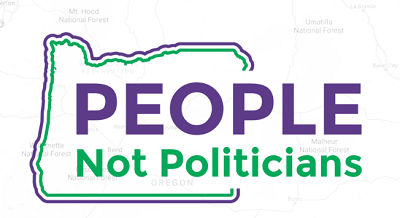
On this day, August 27, 2019, jet-car speed racer 30-year-old Jessi Combs, known by fans as the "fastest woman on four wheels," died in a crash in the Alvord Desert in Southeastern Oregon while trying to break a speed record.
 Post an Event
Post an Event
| Benton County Republicans’ Private Fundraising Event, “Bent-on Boots and Bling” with Trey Taylor |
| Friday, September 5, 2025 at 5:00 pm |
| Featuring Trey Taylor
Music Private Event
Friday, September 5, 2025 5:00-5:30 pm VIP Reception
5:30-8:00 pm Heavy Appetizers,
Auction, Concert
Red: $750 VIP Reception
Front Row Table Sponsor
White: $500 Table Sponsor
Blue: $50 per person
Limited Seating. Get Yours Now!!!
Support Local
Dress up: Bling, Cowboy, Patriotic Benton County Republican
FUNDRAISER
www.BentonGOP.org
Get your tickets today at:
https://www.bentongop.org/event-details/benton-county-republicans-fundraiser/form
About Trey:
Trey is the youngest African American Man in Country Music History. The Denver Post wrote
"It's impossible to miss his enthusiasm. With a fondness for cowboy boots, gaudy colors and dazzling jewelry, Trey Taylor could stand toe to toe with any of the Pop, Country or even Rap
contemporaries of his generation.“ |
| Trysting Tree Golf Club, 34028 NE Electric Rd., Corvallis |
The State of Washington beat us to it
 Editor’s note: This is the seventh in a multi-part series on the budget for the State of Oregon and where possible efficiencies can be found.
Editor’s note: This is the seventh in a multi-part series on the budget for the State of Oregon and where possible efficiencies can be found.
Oregon law currently requires periodic emissions testing for many vehicles in the Portland and Medford areas. These tests are paid for by the vehicle owners, so the costs of doing the tests theoretically pay for themselves, though they are a drag on the economy not just in the cost of the test, but in the inconvenience borne by vehicle owners. The dollars saved by vehicle owners -- $21 in the Portland area and $10 in Medford -- will incrementally increase the economies in those regions and generate more tax dollars.

Closing the vehicle test stations might not save the state much money operationally, as the tests are self-funding, but the real estate occupied by the clean air stations certainly has some value -- probably in the millions. Sale of these locations could provide the budget with a one-time shot of cash.
Environmentalists who support the testing worry that it will lead to lower air quality, but emissions regulations on vehicles have been tightened so much that there is hardly any pollution produced.

This is what prompted the State of Washington to
end it's vehicle emissions program on January 1 of this year, 38 years after it began. The Washington State Department of Ecology stated, “Air quality in Washington is much cleaner now than when the program began in 1982. Every community currently meets all federal air quality standards. The combination of the vehicle emission testing program and advances in vehicle technology led to reduced transportation-related air pollution. We think air quality will continue to improve as newer, cleaner vehicles replace older, less-efficient models.â€
Savings: Several Million
--Staff Reports| Post Date: 2020-07-18 08:00:00 | Last Update: 2020-07-06 22:27:26 |
The psychology of compliance
Oregon Gov. Kate Brown says schools this fall will not look like a normal year. And why not? Following Wednesday's meeting of the Healthy Schools Reopening Council, she said: “As COVID-19 continues to spread across Oregon, it has become clear that school this fall will not look like a normal year. Many, if not most Oregon students are in districts that will focus on online distance learning or have a hybrid model of some online education and some in-person classroom time… Whether or not kids are in school buildings this fall, we must provide the very best possible education for every single Oregon student, while ensuring that the school experience is as safe as possible for everyone: students, educators, support staff, parents, and the community at large."
Previously, she announced
rules for kids. Children over the age of 2 and under the age of 12 are recommended, but not required, to wear a mask, face shield or face covering. The
Oregon Department of Education is following CDC guidelines recommending students in 6th to 12th grade wear face coverings when physical distancing cannot be maintained. Oregon has had 550 kids of grade school age and younger test positive with only 10 hospitalized.
What should we make of
two schoolboys in China reportedly collapsed and suddenly died within a week of each other after they were forced to participate in gym class while wearing face masks?
Conditioning for “compliance refers to a change in behavior that is requested by another person or group; the individual acted in some way because others asked him or her to do so (but it was possible to refuse or decline)" according to Breckler, Olson, and Wiggins in Social Psychology Alive. It’s pressuring compliance without pressure, it’s indoctrinating for the social good that affects future responses. This is verified in a study,
Consistency-based compliance across cultures, “The tendency to feel committed to past personal choices and to behave consistently with these commitments has been shown to have a profound impact in various compliance settings.â€
Never mind that it’s unhealthy to wear a mask and could have more dramatic health effects than the threat of COVID-19, especially for our children. Are the school guidelines really for the protection of students from getting a virus, or is it about conditioning students into being widgets in a socialistic society?
The use of face masks on healthy people during the coronavirus pandemic has been a major point of confusion among scientists and the public, and the WHO guidelines go against the CDC's face-mask recommendations. First, on April 6, the World Health Organization released guidance saying that healthy people don't need to wear face masks to prevent coronavirus spread. Masks should be for the sick, their caretakers, and healthcare workers.
Last Friday, the CDC recommended that all Americans wear face masks when they are in public. Then, the World Health Organization new guidance confirmed that healthy people don't need to wear face masks and that doing so won't provide added protection from the coronavirus. “There's some evidence that caretakers of infected people can protect their health by wearing masks,†the WHO guidance said, but "there is currently no evidence that wearing a mask (whether medical or other types) by healthy persons in the wider community setting, including universal community masking, can prevent them from infection with respiratory viruses, including COVID-19." WHO also said, “community masking could lead to a "false sense of security."
In the week that ended on June 27,
there were 1,363 deaths in the United States involving COVID-19, which was a 91.9 percent drop from the peak.
Inconsistent thoughts have taken over from constantly hearing about the “new normal†of testing, contact tracing, wearing masks, social distancing, and quarantine, with the possibility of mandatory vaccinations and microchipping. Still, multiple studies have confirmed that sunlight kills COVID in a matter of minutes, as reported in a recent
New York Post article, not to mention successful treatments with choloroquine or hydroxychloroquine, favilavir and others, even
CBD.
All this has led to fear and irrational reactions. It’s a primary reason why many are suspicious of government’s COVID guidance, and frustrated over what is the truth. If you are concerned about over-regulating masks for students, social distancing, and virtual classes, run for school board in 2021.
--Donna Bleiler| Post Date: 2020-07-17 20:56:39 | |
Pay attention. This is actual science in action.
This week, the Oregon Board of Pharmacy voted to ‘repeal’ the
temporary rule related to hydroxycholoroquine/choloroquine (HCQ/CQ) prescription dispensing, that placed restrictions on its use. It now has no restrictions related to COVID-19 impairing its ability to be prescribed.
The rule dates back to March 25, the Oregon Board of Pharmacy adopted a
temporary emergency rule that prohibits the dispensing of chloroquine and hydroxychloroquine for presumptive treatment or prevention of COVID-19 infection to preserve supplies for treatment of inflammatory conditions, malaria, and documented COVID-19 infection in hospitalized patients.
The rule was revised on April 2 to allow CQ/HCQ treatment to patients with a positive test result for or clinical diagnosis of COVID-19 infection, in response to the challenges related to testing capabilities and delayed turnaround testing times faced by Oregon care providers.
Later that month, in response to
guidelines issued by the National Institutes of Health, the board further restricted prescriptions of CQ/HCQ to protect the availability of the drug. It cited the guidelines, which said, “At present, no drug has been proven to be safe and effective for treating COVID-19. There are no Food and Drug Administration (FDA)-approved drugs specifically to treat patients with COVID-19. Although reports have appeared in the medical literature and the lay press claiming successful treatment of patients with COVID-19 with a variety of agents, definitive clinical trial data are needed to identify optimal treatments for this disease.â€
The flexibility shown by the Oregon Board of Pharmacy and responsiveness to what is clearly not an availability crisis, nor a clear case of the drug being ineffective is refreshing, in an increasingly political world of government orders and directives. When so many agencies and politicians claim to be driven by science, it’s nice to see one that actually is.
--Staff Reports| Post Date: 2020-07-17 19:21:48 | |
$62 million in federal funds will go to “Blacks onlyâ€
The Oregon Legislative Joint Emergency Board has just appropriated 62 million dollars though the Oregon CARES Fund to assist businesses that were negatively impacted by the government’s response to the Coronavirus pandemic,
but only if the businesses are owned by black people. If your skin is another color, this program is not for you. There will not likely be a program for you because of your skin color, unless you are black, if elected Oregon leaders continue making these decisions such as this. They seem bent on a regressive racial segregation scheme, sadly. Critics of such “equitable legislation†would note that unequal application of law can lead to disastrous consequences.
Senate Republican Leader Fred Girod presented an
opinion written by Legislative Counsel in which counsel referred to case law on racial carve-outs. The opinion says, “A race-based classification is subject to ‘strict scrutiny,’ meaning that the classification is invalid unless the state can demonstrate that the classification is ‘narrowly tailored’ to ‘further compelling government interests.’â€
The BIPOC (Blacks, Indigenous, and ‘People of Color’) caucus -- which includes State Representative Teresa Alonso Leon (D-Woodburn) -- who is not black and presumably would not qualify for the funding -- has release the following statements:
Oregon Legislature BIPOC Caucus Statement on Oregon Cares Fund for Black Relief and Resiliency SALEM –The Black, Indigenous, and People of Color (BIPOC) Caucus issued the following statements in support of the Joint Emergency Board’s $62 million targeted investment in the Oregon Cares Fund for Black Relief and Resiliency from the Coronavirus Relief Fund. “The BIPOC Caucus has been vocal in our support for an equitable response to the Coronavirus pandemic. We must target resources to counteract disparate outcomes caused by existing historical disparities,†said Rep. Tawna Sanchez (D-Portland).“We are constant and persistent advocates for continuing to act boldly to protect the health of all our marginalized communities,†said Sen. Lew Frederick (D-Portland). “Today we championed the Black community who has been disproportionately impacted by COVID-19.â€â€œBy centering the needs of the most marginalized communities among us, we will see first hand how we can provide a more holistic understanding of community health for all Oregonians,†said Rep. Teresa Alonso Leon (D-Woodburn). “This pandemic has distilled the reality that we are only as resilient as the most vulnerable communities in our society. It is far past time to call out the needs of and provide a lifeline to Black Oregonians,†said Rep. Akasha Lawrence Spence(D-Portland). “The Black community will utilize these resources to weather the global health pandemic and consequent recession. Our communities are made resilient when we make informed and targeted investments in those who have been historically under-resourced,†said Rep. Janelle Bynum(D-Happy Valley).
“Allocating money through The Oregon Cares Fund is one step toward a truly equitable future. A truly equitable response, however, also requires the State to collect disaggregated data on race and ethnicity in Oregon’s public health and economic response,†said Rep. Andrea Salinas (D-Lake Oswego).“This investment means that a Black small business will be able to pay their employees or a community based organization will continue providing much-needed support. These investments will reap benefits for our Black communities all across our state,†said Rep. Mark Meek (D-Oregon City).“The Oregon Cares Fund is a fundamental piece that was missing from the puzzle in our state's response to comprehensive community care during this pandemic,†said Sen. James Manning (D-Eugene). “It was incumbent on the legislature to make this investment in this community given the history of exclusion and given our moral obligation to do better.â€
Editor's note: "Neo-Racism" is a term being used by those who want to point out the hypocrisy of persons who they see as overusing the term "racism" yet, themselves act in a manner that proposes to favor persons of one skin color over another.
--Ben Fisher| Post Date: 2020-07-16 19:12:18 | Last Update: 2020-07-16 20:12:43 |
“If we don’t open up the state for business, the next budget will be austere.â€
House Republican Leader Christine Drazan issued a comment on the recent action taken by the Legislature's Emergency Board to fix budgets holes. “Like with many family budgets, the COVID outbreak has delivered a powerful blow to our state’s finances. As we rebalance the budget, it’s vital that we protect the $9 billion we’ve promised to Oregon schools and higher education and ensure stability for programs that will keep Oregonians healthy and safe during these difficult times. We have the money set aside for a
rainy day and now is an appropriate time to draw from our savings. As we do so, we must stay mindful that Oregon’s budget shortfall is a fraction of the losses experienced by families and businesses throughout our state. As we right-size the state budget we have to prevent additional suffering.â€

Senate Republican Leader Fred Girod (R-Stayton), Co-Vice Chair on the full Ways and Means Committee, issued the following statement: “We have some tough times ahead, but because of the walkout on cap and trade, we saved the state about a billion dollars, which created a sizable ending balance. We had to make some cuts in this state budget re-balance plan, but it wasn’t as bad as I thought it might be. We had money saved in the Education Stability Fund, and this plan accessed $400 million of it so there’s still
quite a bit left in reserves. “If we don’t open up the state for business, the next budget will be austere.â€
Neither lawmaker commented on the e-Board's appropriation of $50 million for arts and culture programs -- spending which some have regarded as inappropriate during a budget crisis.
Lawmakers did spar about the legality of allocating $62 million of CARES Act money from the federal government to Black relief.
Senate Republican Leader Girod produced an opinion from Legislative Counsel that said, "A law that discriminates between individuals based on their membership or nonmembership in a suspect true class is “inherently suspect†and is upheld only if the law “can be justified by genuine differences between†members and nonmembers of the class."
--Staff Reports| Post Date: 2020-07-16 17:58:13 | Last Update: 2020-07-16 17:58:28 |
Calls out Obama administration
President Trump announced more results from his Administration’s regulatory relief efforts and proposed
streamlining infrastructure approvals and expanding the economy. Since President Trump took office, for every new regulation seven have been abolished. That’s 25000 pages of regulations that didn’t pass through Congress for a savings of $50 billion already realized. The biggest beneficiaries are ordinary people seeing 15% reduction in costs. Going forward, the
White House Council of Economic Advisers (CEA) estimates that just 20 of the new proposed Administration’s deregulatory actions will save U.S. consumers and businesses over $220 billion per year.
What does that mean for your family? According to CEA, President Trump’s deregulation program is projected to boost household incomes by $3,100 annually in the coming years. CEA estimates that cutting red tape will lead real incomes for Americans to rise by $53 billion per year between 2021 and 2029. The benefits will take many forms: Americans will have access to cheaper cars, and patients will save nearly 10 percent on prescription drugs. Most important, these rollbacks on everyday items will help blue-collar and middle-class Americans significantly more than the richest citizens of our country.
Overregulation falls disproportionately on the shoulders of lower-income families, who spend a larger share of their incomes on heavily regulated goods and services, such as transportation, food, and healthcare. Such government burdens also cost American jobs by causing workers to be replaced with lower-cost machines.
What does it mean for Oregonians? That depends on Oregon’s legislature and Governor. Some of the deregulation savings can’t help to trickle through. But, when the majority party passes a 6% surcharge on cell phones in a special session in the middle of a pandemic that will hit low-income and seniors the hardest, one has to question what is next.
Americans don’t need Washington to create more white-collar jobs for central planners. Oregonians don’t need more green jobs created by government when it destroys our livelihoods. We need a government that operates efficiently, effectively, and inexpensively to protect citizens. Is your American dream in government demands or in less government and your freedom to create your own destiny?
--Donna Bleiler| Post Date: 2020-07-16 16:51:01 | Last Update: 2020-07-16 16:52:11 |
Software makes work efficient. Let’s divert those savings.
 Editor’s note: This is the sixth in a multi-part series on the budget for the State of Oregon and where possible efficiencies can be found.
Editor’s note: This is the sixth in a multi-part series on the budget for the State of Oregon and where possible efficiencies can be found.
If you've ever attended -- either in person or by video -- a meeting of the Joint Legislative Committee on Information Management and Technology, also known as the IT Committee, you've seen a familiar refrain. Whether in the early stages of asking for approval, or the later stages of reporting progress, agencies doing IT projects consistently, predictably bemoan their existing systems, heavily using the terms "COBOL", "green screen" and "mainframe". And, while they paint a dire picture of the current state, they simultaneously paint a rosy picture of how a new software system will make their agency much more efficent, productive and provide better service to the taxpayer.
Perhaps it's time we take them at their word.
These IT projects are tremendously expensive -- from the more modest ones costing tens of millions of dollars to perhaps the largest fiscal fiasco in the history of the state, Cover Oregon, which cost the taxpayers over $300 million dollars, without ever releasing a finished product. Currently, these projects are often funded with general fund money and the cost savings, efficiency and productivity promised years earlier seem to just get swallowed up in the biennial budget churn. In the end if there were any savings, they never made it out of the agency.
Here's a simple thought: What if we made every agency pay for their software project by returning the value created by the software project to the general fund. In a sense, the state would be just loaning the value to the agency. Here's how it would work:
Let's say an agency wants to embark on a $30 million software project -- a medium sized endeavor that the agency claims will make them more efficient. The legislature will loan the agency the $30 million and have it paid back over, say, a period of 15 years at the cost of $2 million per year. The Legislative Fiscal Office estimates that the cost of sustaining an employee for a year is about $125,000, which includes salary, benefits, retirement and infrastructure. That means once the software is released, they have to agree to lower their head count by 8 people (8 x $125,000 = $2 million).
There are two basic ways to draft a government budget. Budgets can be done as a current-service-level baseline budget, where the same money as the last fiscal period is allocated plus increases for inflation, plus increases for population increase, plus any possible increases for program expansion. Alternately, budgets can be done as a zero-based budget where the entire budget from previous fiscal periods are not considered and a new budget is built from scratch. As attractive as zero-based budgeting sounds, it's not possible or practical to do all the time, so Oregon has adopted a hybrid system. The savings can easily be programmed into the current service level for the agency.
The savings would be twofold. First, there would be a way to pull the savings out of the agency and back into the general fund where they can be more carefully allocated. Second, it might make agencies think twice about how badly they want to undertake an IT project and what the
actual savings might be.
One caveat: Sometimes the rationale for doing an IT project is something like compliance or increased security and there is no financial return. In these cases, the legislature could write new key performance measures to reflect outcomes based on these requirements, and forego some or all of the fiscal return. That could be the choice of the legislature and it doesn't create a problem.
Additionally, it could be argued that since only the legislature has the constitutional authority to allocate money, it's not legal for the agency to realize savings from a software project and redirect those savings back into agency programs. Any savings
must be directed back into the general fund.
As said earlier, IT projects are very expensive. The savings that could be realized by this discipline could also be very large.
Savings: Tens of Millions, each biennium
--Staff Reports| Post Date: 2020-07-16 08:00:00 | Last Update: 2020-07-06 22:24:34 |
Climate is still a big deal for the Governor
Governor Kate Brown has signed a
memorandum of understanding with 15 other governors that commits Oregon to accelerate the adoption of zero-emission for medium and heavy-duty vehicles. The memorandum is a joint action plan to electrify buses and trucks, and support charging-station investments.
The governors said in a news release that trucks and buses are responsible for a quarter of greenhouse-gas emissions, despite comprising just 4 percent of vehicles on the road. In their agreement, the governors specifically called for “accelerat(ing) the deployment of zero-emission medium- and heavy-duty trucks and buses to benefit disadvantaged communities that have been historically burdened with higher levels of air pollution.â€
Oregon is also a member of the 10-state Multi-State ZEV Task Force charged with developing the joint action plan within six months. The action plan includes the need for financial and non-financial vehicle and infrastructure incentives, infrastructure deployment strategies, utility involvement, outreach to the public and private fleet managers and fostering electric trucks in urban areas.
The move to replace diesel vehicles was a controversial issue in Oregon’s 2019 legislature. Rural loggers and truckers protested that the proposal would put them out of business. The bill passed requiring medium-and heavy-duty diesel trucks and buses in the state’s three most populated counties to phase-out older vehicle engines. Heavy-duty trucks titled in these counties must be model year 2007 or newer by 2025. Newer models release fewer emissions into the air.

Let us not forget that on March 9, the legislative Emergency Board authorized $5 million for Oregon DEQ to begin work on reducing greenhouse gas emissions under existing legislative authorities, including hiring ten permanent staff to speed the effort. And, one day later, on March 10, Governor Kate Brown issued a 14-page
Executive Order 20-04 on climate change. It lays out the goals for Oregon’s climate response on an emergency timeline stating: “This Executive Order establishes science-based GHG emissions reduction goals, and calls for the State of Oregon to reduce its GHG emissions (1) at least 45 percent below 1990 levels by 2035, and (2) at least 80 percent below 1990 levels by 2050.†The order breaks from the carbon market-based approach and instigates a declining cap on emissions – the exact timeline the Republican legislators stopped by walking out of the 2019 session.
The allocation of $5 million and the Executive Order was all timed to be cut-in-stone before and while the Governor was preparing the emergency order over COVID-19. Has the pandemic made us numb to the cap and trade issue that is helping to stall the economy?
Travel photo created by kjpargeter - www.freepik.com
--Donna Bleiler| Post Date: 2020-07-15 16:56:23 | Last Update: 2020-07-15 16:56:34 |
The Emergency Board also provided support to music, culture and community venues
The Joint Emergency Board held a virtual meeting in order to allocate over $200 million to support COVID-19 relief efforts, specifically targeting investments to struggling workers, small businesses and Oregonians facing the deepest and most disparate impacts of the pandemic.
Among the worthy causes is $35 million to fund $500 Emergency Relief Checks to Oregonians who are still waiting for unemployment benefits. Now, to receive that $500, a one time payment, the
Department of Administrative Services (DAS) will work with financial institutions to develop a simple process for Oregon workers to apply. DAS will report to the Legislative Fiscal Office on behalf of the Emergency Board once this process has been structured on eligibility, application requirements, public access and notification of the program, coverage of financial institution administrative costs, and mechanisms to prevent fraud while protecting public health and ensuring the emergency relief is provided to eligible applicants as quickly and efficiently as possible.
You read that right, legislators actually think a process of application, checking for fraud and notifying eligible parties can be done quickly and faster than simply processing the unemployment benefit. The number waiting has been whittled down from 440,000 to 60,000 and the employment department says these are newly eligible self-employed workers that haven’t been paid. A policy change to deal with the remaining applicants is to allow the closed Gresham office to work remotely from home. Steve Demarest, president of SEIU Local 503, said, “adjudicators who could not work in the office because of health concerns will begin working remotely adding experienced staff to resolve more claims.â€
Was $35 million to appease a
lawsuit filed last week by 13 jobless Oregonians? They imply that a lot of the remaining applicants are non-English speakers and self-employed workers and the outdated computer system only accommodates English. Then there are those that will receive the $500 payment simultaneously with unemployment and those that will just miss the check because unemployment was processed. And where will the state get funds to prop up the economy when the CARES payments end in August?
Senate Majority Leader Rob Wagner (D-Lake Oswego) said, “The Emergency Board also provided support to music, culture and community venues. These entities have taken necessary steps to postpone or cancel their programs in order to prioritize public health. We want to ensure our communities can still benefit from their cultural contributions when they can safely reopen. The Board also put funds toward small businesses who did not receive support through the Paycheck Protection Program. These allocations of federal Coronavirus Relief Fund dollars will help address some of the economic strain caused, and deepened, by this public health crisis. However, there is no question Oregon needs additional federal assistance in order to ensure we can provide support and services individuals and families across our state rely on.â€
--Donna Bleiler| Post Date: 2020-07-14 17:33:59 | Last Update: 2020-07-15 08:17:30 |
After four years, the impacts are finally being felt
In 2015 the Oregon Legislature passed
Motor Voter, in the form of
HB 2177 which directs the DMV to effectively turn over data from every eligible unregistered voter (over 16 years old, an Oregon resident, and a US citizen) when they visit the DMV to apply for, renew, or replace an Oregon drivers’ license, ID card, or permit. Each time this happens, the voter will receive a mailing from the Oregon Elections Division explaining their options for registering to vote.​ ​With the card, they can:
- Do nothing. You will be registered to vote as a non-affiliated voter (not a member of a political party).
- Choose a political party by returning the card. Joining a political party will allow you to vote in its primary elections.
- Use the card to​ opt-out and decline to register to vote.​
One thing that Motor Voter has done, is effectively register everyone in the state to vote. The only way to not be registered to vote is to be ineligible or to take actions to not be registered to vote. Even then, you still might find yourself registered to vote. This has had two major side-effects.
The first is that persons eligible to sign initiative, referendum and recall petitions has increased. You have to be an Oregon registered voter to sign any of these, and with the increase in registered voters, the pool of possible signers has increased -- without increasing the threshold for the number of signatures needed.
Second, it has made voter registration drives a thing of the past. Political parties and civic organizations who formerly did this find very slim pickings now.
These numbers are from July 2020, so they change over time, but absent any change in the drivers of the underlying data, the conclusions from them should be stable.
The population of Oregon was 4,217,737 according to the
US Census Bureau, but 20.5% of those were under 18 and ineligible to vote, leaving 3,353,101 voting age people in Oregon. Of those,
2,843,060 are registered to vote, leaving 510,041 voting age unregistered persons. Subtract from that an unknown number of non-citizens, persons who don't wish to register to vote, and slackers who have been removed from the voter rolls due to having relocated (if your vote-by-mail ballot is returned, you are placed in inactive status) and you are left with very few people who are fine citizens and worthy of chasing down and registering.
In the 2015 session, Motor Voter was passed and it took effect in January of 2016. It's now been over 4 years and, as one might expect since drivers licenses expire every four years, the increase in voter registrations has plateaued almost exactly 4 years from the law going into effect. This chart shows voter registration over time. Notice how the grey line (non-affiliated voters) levels off in about January of 2020?
--Staff Reports| Post Date: 2020-07-14 13:53:50 | Last Update: 2020-10-14 20:58:21 |
Let’s have teachers teach during the school year.
 Editor’s note: This is the fifth in a multi-part series on the budget for the State of Oregon and where possible efficiencies can be found.
Editor’s note: This is the fifth in a multi-part series on the budget for the State of Oregon and where possible efficiencies can be found.
The K-12 educational establishment is very serious about continuing education. There may be some debate about whether advanced degrees and annual continuing education is really necessary to teach third-graders, but if one accepts that that it is, it certainly needs to be done in the most efficient way.
This is perhaps a good time for a change in policy around educator continuing education. The Student Success Act, with it's dollars dedicated to continuing education and the newly formed Educator Advancement Council means that the regime of continuing education for educators is in for some changes. The low-hanging fruit of efficiency is clear: If we're going to do continuing education, let's not do it during the school year, when substitute teachers have to be employed, both at great expense and great disruption to the classroom environment. Instead, if it were required in the summer, some money could be saved.
Because of the equitable funding requirements in the Oregon Constitution, it's not usually feasable for lawmakers to put requirments on funding. However, the new Educator Advancement Council which will provide grants to regional entities who are responsible for funding and supporting professional development and other support for educators in the early learning through K-12 systems. These funds, which amount to $35.8 million for grants to regional entities for continuing education,
can be controlled by the Legislature. Some of this money will go to pay substitutes.
One might expect some push back from the teachers' unions, but a big-picture view might bring them to the table. If we don't get efficiencies like this, the cuts might come directly to education budgets.
--Staff Reports| Post Date: 2020-07-14 08:00:00 | Last Update: 2020-07-06 22:18:27 |
They have until August 17 to get 58,789 valid sigs
“We are grateful the Secretary of State recognized the importance of the democratic process and the significant impacts of the pandemic on Oregonians' ability to participate in this process,†said Norman Turrill, chair of
People Not Politicians and Chief Petitioner of IP 57. "While we are confident in the validity of the signatures we submitted, we know there are tens of thousands of Oregon voters eager for their signature to count. We will continue to collect signatures to ensure Oregon voters have a chance to bring the redistricting reform we need to end gerrymandering in Oregon once and for all.â€
Secretary Clarno released her decision in response to a preliminary order issued by Judge Michael J. McShane on July 10 to grant People Not Politicians, a broad and diverse coalition that has come together to create an independent citizens commission for Oregon, relief to qualify its redistricting reform initiative for the November 2020 election.
The judge’s order allowed the Secretary of State to decide by 5:00pm Monday, July 13, 2020 to either accept
People Not Politician’s signatures as submitted, or accept a reduced number of signatures to 58,789 and allow additional time to gather until August 17, 2020. The campaign submitted over 64,000 signatures on July 2, meaning that they've already submitted enough signatures -- though they may not all be valid -- but this move by the Secretary of State certainly puts them within striking distance.
Initiative Petition 57, filed in November 2019, would create the Oregon Citizens Redistricting Commission and put redistricting in the hands of voters, not our politicians. The commission would consist of 12 Oregonians who applied and were selected from qualified applicants – four from the first largest political party, four from the second largest political party, and four others who are third party members or non-affiliated. Major donors to political candidates or parties would not be eligible. Neither would elected-officials, political party officials or their family members. Commissioners would be selected to represent the broad diversity of Oregonians.
The initiative campaign coalition has been led by the League of Women Voters of Oregon, Common Cause Oregon, Oregon Farm Bureau, the Independent Party of Oregon, NAACP Eugene/Springfield Branch, OSPIRG, Oregon’s Progressive Party, and tens of thousands of Oregonians who support the effort to remove conflicts of interest from drawing of voter lines.
--Staff Reports| Post Date: 2020-07-13 21:34:28 | Last Update: 2020-07-13 21:35:12 |
Read More Articles







 Editor’s note: This is the seventh in a multi-part series on the budget for the State of Oregon and where possible efficiencies can be found.
Editor’s note: This is the seventh in a multi-part series on the budget for the State of Oregon and where possible efficiencies can be found.




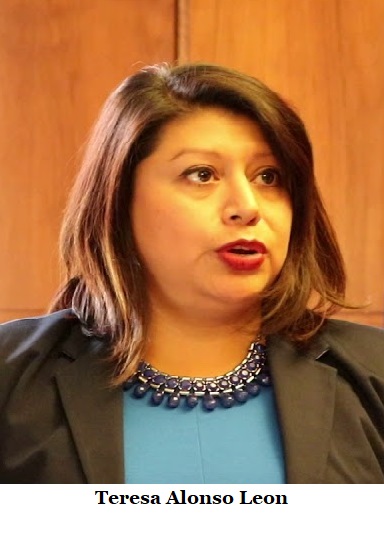
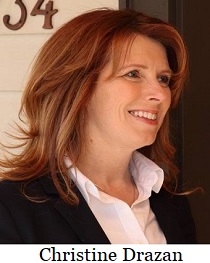
 Senate Republican Leader Fred Girod (R-Stayton), Co-Vice Chair on the full Ways and Means Committee, issued the following statement: “We have some tough times ahead, but because of the walkout on cap and trade, we saved the state about a billion dollars, which created a sizable ending balance. We had to make some cuts in this state budget re-balance plan, but it wasn’t as bad as I thought it might be. We had money saved in the Education Stability Fund, and this plan accessed $400 million of it so there’s still
quite a bit left in reserves. “If we don’t open up the state for business, the next budget will be austere.â€
Senate Republican Leader Fred Girod (R-Stayton), Co-Vice Chair on the full Ways and Means Committee, issued the following statement: “We have some tough times ahead, but because of the walkout on cap and trade, we saved the state about a billion dollars, which created a sizable ending balance. We had to make some cuts in this state budget re-balance plan, but it wasn’t as bad as I thought it might be. We had money saved in the Education Stability Fund, and this plan accessed $400 million of it so there’s still
quite a bit left in reserves. “If we don’t open up the state for business, the next budget will be austere.â€


 Editor’s note: This is the sixth in a multi-part series on the budget for the State of Oregon and where possible efficiencies can be found.
Editor’s note: This is the sixth in a multi-part series on the budget for the State of Oregon and where possible efficiencies can be found.

 Let us not forget that on March 9, the legislative Emergency Board authorized $5 million for Oregon DEQ to begin work on reducing greenhouse gas emissions under existing legislative authorities, including hiring ten permanent staff to speed the effort. And, one day later, on March 10, Governor Kate Brown issued a 14-page Executive Order 20-04 on climate change. It lays out the goals for Oregon’s climate response on an emergency timeline stating: “This Executive Order establishes science-based GHG emissions reduction goals, and calls for the State of Oregon to reduce its GHG emissions (1) at least 45 percent below 1990 levels by 2035, and (2) at least 80 percent below 1990 levels by 2050.†The order breaks from the carbon market-based approach and instigates a declining cap on emissions – the exact timeline the Republican legislators stopped by walking out of the 2019 session.
Let us not forget that on March 9, the legislative Emergency Board authorized $5 million for Oregon DEQ to begin work on reducing greenhouse gas emissions under existing legislative authorities, including hiring ten permanent staff to speed the effort. And, one day later, on March 10, Governor Kate Brown issued a 14-page Executive Order 20-04 on climate change. It lays out the goals for Oregon’s climate response on an emergency timeline stating: “This Executive Order establishes science-based GHG emissions reduction goals, and calls for the State of Oregon to reduce its GHG emissions (1) at least 45 percent below 1990 levels by 2035, and (2) at least 80 percent below 1990 levels by 2050.†The order breaks from the carbon market-based approach and instigates a declining cap on emissions – the exact timeline the Republican legislators stopped by walking out of the 2019 session.
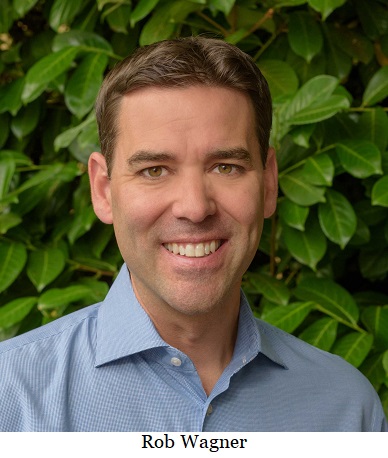

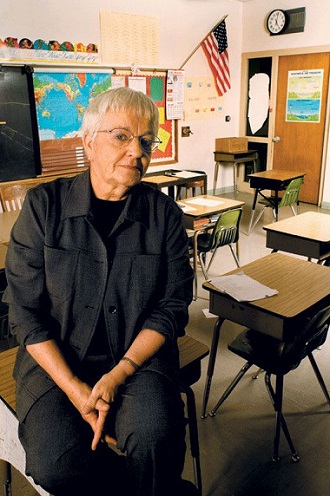
 Editor’s note: This is the fifth in a multi-part series on the budget for the State of Oregon and where possible efficiencies can be found.
Editor’s note: This is the fifth in a multi-part series on the budget for the State of Oregon and where possible efficiencies can be found.
